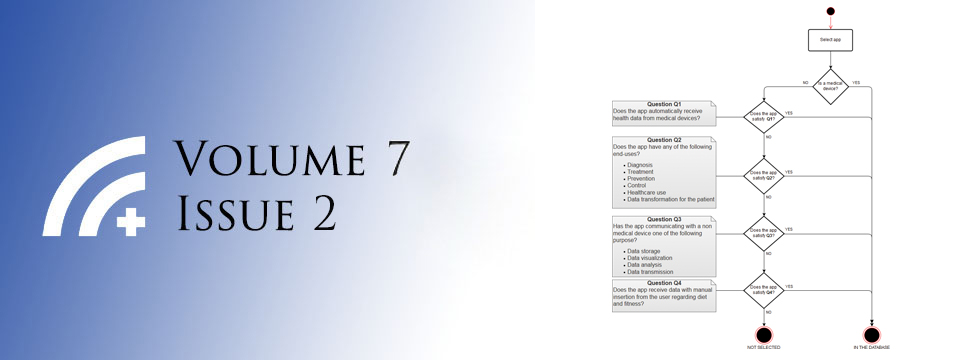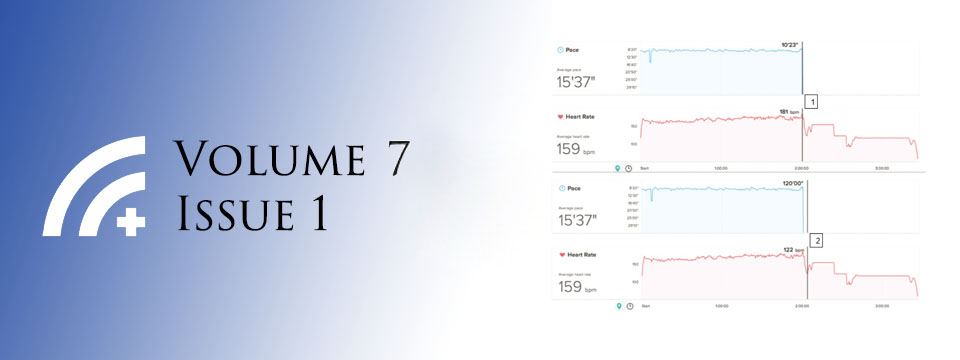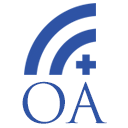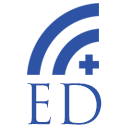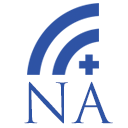Posted on Jan 31, 2015 in Original Article |
Gareth Furber, PhD1, Ann E Crago2, Tom D Sheppard3, Clive Skene4
1(Clinical Psychology) – University of South Australia, Adelaide, SA, 5000; 2Bachelor of Nursing – Youthlink, Women’s and Children’s Health Network, SA Health, GP Plus Health Care Centre Marion, 10 Milham Street, Oaklands Park, Adelaide, SA, 5046; 3Registered Nurse (Mental Health) – Youthlink, Women’s and Children’s Health Network, SA Health, GP Plus Health Care Centre Marion, 10 Milham Street, Oaklands Park, Adelaide, SA, 5046; 4Master of Psychology – CAMHS Executive, Level 1, 55 King William Road, North Adelaide, SA, 5006
Corresponding Author: E gareth.furber@unisa.edu.au
Journal MTM 4:1:20–24, 2015
doi:10.7309/jmtm.4.1.5
In this case report we describe the development and early trialling of an iPad application replicating the Kessler 10+ (K10 +), a widely used brief measure of psychological distress. The application was the result of a collaboration between a youth mental health outreach service (Youthlink), a private application developer (Enabled) and local health service IT support. Therapists reported greater engagement with the iPad version of the K10+ compared to the pen/paper version and described how the application assisted them to collaboratively reflect with consumers on treatment progress.
Posted on Jan 30, 2015 in Original Article |
Aaron Wang, MD, PhD1, Alex Christoff, CO, COT1, David L. Guyton, MD1, Michael X. Repka, MD1, Mahsa Rezaei, MS1, Allen O. Eghrari, MD1
1Department of Ophthalmology, Johns Hopkins University School of Medicine, Baltimore, Maryland, USA
Corresponding Author: allen@jhmi.edu
Journal MTM 4:1:15–19, 2015
doi:10.7309/jmtm.4.1.4
Background: Google Glass is a wearable, head-mounted computer with display, photographic and videographic imaging capability, and connectivity to other devices through Wi-Fi and Bluetooth signaling.
Aims: To describe for the first time the use of Google Glass for use in indirect ophthalmoscopy and modification techniques to assist with its use.
Methods: A lightweight, portable light source was installed above the Glass aperture, a small tissue paper used to diffuse the light, and the arm of the headset was taped to the examiner’s glasses in order to bring the display into the right eye’s central visual field.
Results: Using a slightly modified Glass headset, the examiner documented the central and peripheral retina in a young male with ease.
Conclusion: We demonstrate for the first time that Glass, with minor modifications, can be used as a simple and effective method to perform and record a fundus examination.
Posted on Jan 30, 2015 in Original Article |
Deepika Jasti1, KVNR Pratap, MDS2, Madhavi Padma.T, MDS3, V. Siva Kalyan, MDS4, M. Pavana Sandhya, MDS5, ASK. Bhargava, MDS6
1Final year Post graduate student, Department Of Public Health Dentistry, Mamata Dental College, Khammam-507002, Andhra Pradesh, India; 2Professor and Head, Department Of Public Health Dentistry, Mamata Dental College, Khammam-507002, Andhra Pradesh, India; 3Professor, Department Of Public Health Dentistry, Mamata Dental College, Khammam-507002, Andhra Pradesh, India; 4Reader, Department Of Public Health Dentistry, Mamata Dental College, Khammam- 507002, Andhra Pradesh, India; 5Senior Lecturer, Department Of Public Health Dentistry, St. Joseph Dental College, Eluru-534003, Andhra Pradesh, India; 6Senior Lecturer, Department Of Public Health Dentistry, Mamata Dental College, Khammam-507002, Andhra Pradesh, India
Corresponding Author: deepikajastii@gmail.com
Journal MTM 4:1:8–14, 2015
doi:10.7309/jmtm.4.1.3
Background: With the recent advent of smart phones, usage of medical apps is on rise. Smart phones are powerful devices that combine the conventional functions of a mobile phone with advanced computing capabilities enabling users to access software applications commonly termed as “apps”. Health care applications (apps) that are downloadable on to smart phones are increasingly becoming popular among clinicians.
Aim: The aim of the present study was to assess the usage of health care apps among Medical and Dental doctors.
Methodology: A descriptive cross sectional questionnaire based study was conducted on medical and dental doctors of Mamata hospitals, Khammam, Andhra Pradesh. A pretested, self administered questionnaire was used and it consists of questions regarding demographic data followed by usage of health care apps. Descriptive statistics were computed to demonstrate the frequency of responses and the comparisons were made using chi-square test. A p-value less than or equal to 0.05 was considered to be significant.
Results: A total of eighty doctors (48 Medical and 32 dental) completed the questionnaire. More males (n = 63) than females (n = 17) participated in the study. Participants had a mean age of 32.5 years. It was found that 68% of dental doctors and 70.45% of medical doctors are using health care apps on their smart phone. Most of the participants (58.8% of dental and 77.4% medical doctors) use the health care apps for knowledge purposes, while no dental doctors used the apps for diagnosis or treatment purposes. The majority of the dental doctors (41.17%) are using these apps for patient education purpose when compared to the medical doctors (3.22%).
Conclusion: There is a high usage rate of health care apps among both medical and dental doctors, with medical doctors using the apps for informational purposes, whereas dental doctors used the apps for patient education.
Posted on Jan 30, 2015 in Original Article |
M Punt, MSc1, H Wittink, PhD1, F van der Bent, Ing1, Jh van Dieën, PhD2,3
1Research group Lifestyle and Health, Utrecht University of Applied Sciences, Utrecht, The Netherlands; 2Move Research Institute Amsterdam, Faculty of Human Movement Sciences, VU University Amsterdam, Amsterdam, the Netherlands; 3King Abdulaziz University, Jeddah, Saudi Arabia
Corresponding Author: Michiel.punt@hu.nl
Journal MTM 4:1:2–7, 2015
doi:10.7309/jmtm.4.1.2
Background: Assessment of gait activity by accelerometry requires data analysis. Currently several methods are used to estimate step frequency. At present the relation between step frequency estimation, gait speed and minimal required time window length remains unknown.
Aims: The purpose of the study was to assess the accuracy of estimates of step frequency (SF) from trunk acceleration data analyzed with commonly used algorithms and time window lengths, at a wide range of gait speeds.
Method: Twenty healthy young subjects performed an incremental treadmill protocol from 1 km/h up to 6 km/h, with steps of 1 km/h. Each speed condition was maintained for two minutes. A waist worn accelerometer recorded trunk accelerations, while video analysis provided the correct number of steps taken during each gait speed condition. Accuracy of two commonly used signal analysis methods (autocorrelation, fast Fourier transformation) was examined with time windows of two, four and eight seconds.
Results: Our main finding was that accuracy of SF estimates with fast Fourier transformation and autocorrelation improved with increasing time window size, only at the lower gait speeds. Accuracy of SF estimation was lower at low gait speeds independent of the algorithm and time window used.
Conclusion: We recommend a minimum TW length of 4 seconds when using AC and PSD algorithms and when using the PSD algorithm to use spectral averaging, as this leads to better results at short TW and low gait speeds.
Posted on Jan 30, 2015 in Editorial |
Rahul Chakrabarti1,2
1Chief Editor, Journal of Mobil Technology in Medicine; 2Ophthalmology Registrar, Royal Victorian Eye and Ear Hospital, Melbourne, Australia
Journal MTM 4:1:1, 2015
doi:10.7309/jmtm.4.1.1
It is with great pleasure that we present in this first issue of 2015 a compendium of publications outlining the global impact of mHealth applications, particularly in developing countries.
The perspective piece by Germann and Franz articulates the challenges that need to be met in order for mHealth to be utilised and upscaled in low resource resource settings. Whilst low-resource countries clearly have great potential to benefit from expansion of mHealth applications, the authors outline key barriers for mHealth expansion in developing regions. They highlight the imperative for strong governance. Critical elements identified include appropriate planning, consideration of feasibility, strengthening private and government partnerships in mHealth projects, and ensuring there is a dynamic auditing process that can record the effectiveness and identify areas for improvement during a project. The authors cite the example of ‘mTrac’, an e-Health initiative overseen by the Ugandan Ministry of Health which is a central auditing and data collection tool to monitor community based projects within their country. The tool is intended to assist in collection, verification of quality and reliability, and ultimately in analysis of data collected across mHealth projects. Whilst the tool is being disseminated in preliminary phases across the country, it demonstrates a change in paradigm particularly from within low-resource countries to improve quality and rigour of data collection and analysis.
Whilst there is an escalating demand for mHealth, the emphasis must now shift to quality of evidence rather than quantity. This is particularly important given it is these low-resource areas where there is a clear demand for data regarding effectiveness of mHealth interventions yet a definite paucity of high quality evidence.1 The publication of Germann anf Franz echo similar themes highlighted previously in our Journal by Bullen regarding the importance of planning, consideration of local factors affecting feasibility, and the tantamount importance of governance in the success of translating mHealth initiatives to real-world functional projects.2 Similarly, an independent report conducted by Price Waterhouse Coopers on the emergence of mHealth outlined that the key principles for upscaling mHealth included finding applications that bring concrete value to stakeholders, the imperative to engage multiple stakeholders at a national level, and to focus on solutions rather than technology.3 Thus, in order to realise the full potential of mHealth there must be a weight of high quality evidence in order to engage the attention of government and non-government investors, and most importantly, patients and communities.
References
1. Free C, Phillips G, Watson L, et al. The effectiveness of mobile-health technologies to improve health care service delivery processes: a systematic review and meta-analysis. PLoS medicine. 2013;10(1):e1001363. 
2. Bullen P. Operational challenges in the Cambodian mHealth revolution. Journal of Mobile Technology in Medicine. 2013;2(2):20-23. 
3. Emerging mHealth: Paths for growth. Price Waterhouse Coopers;2012.
Posted on Jan 20, 2015 in News |
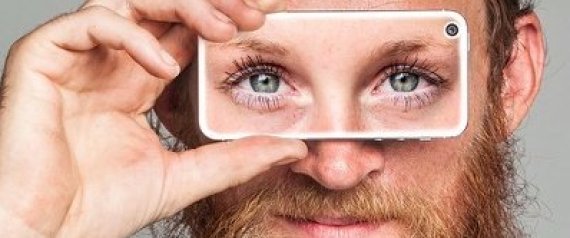
Be My Eyes is a new app for iOS devices that allows sighted volunteers to help blind people complete everyday tasks.
The app uses live video chat to enable a blind person to ask a sighted volunteer for help with simple tasks such as reading the expiration date of a milk carton, to more complex tasks such as navigating new surroundings. Through the iphone or ipad’s video camera, the sighted volunteer is able to describe what they see to help the blind person solve the problem or complete the task.
The app is an easy and flexible way to make a difference in the everyday lives of blind people. The app sends push notifications to sighted volunteers when a blind person is requesting assistance. If the volunteer is unavailable, another volunteer will be notified.
The app was developed by a Copenhagen based company and is currently free to download on the App Store.
http://www.bemyeyes.org
By: Dr Joanne Teong

